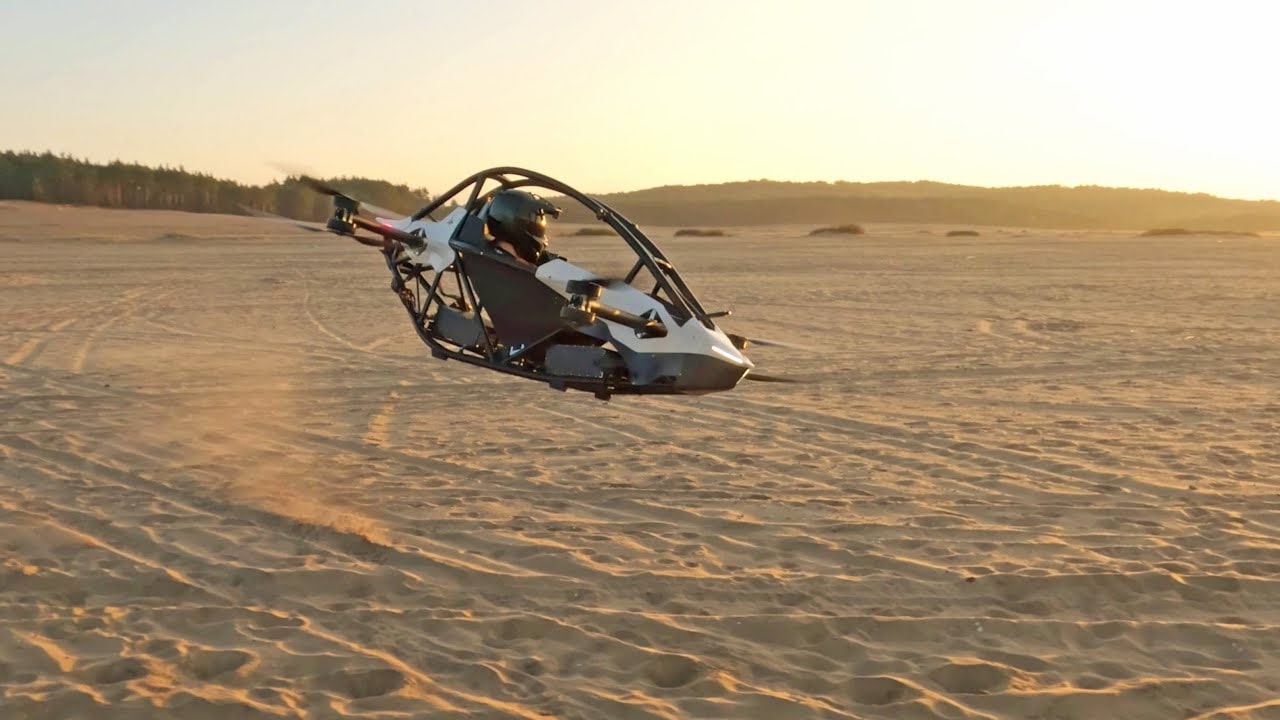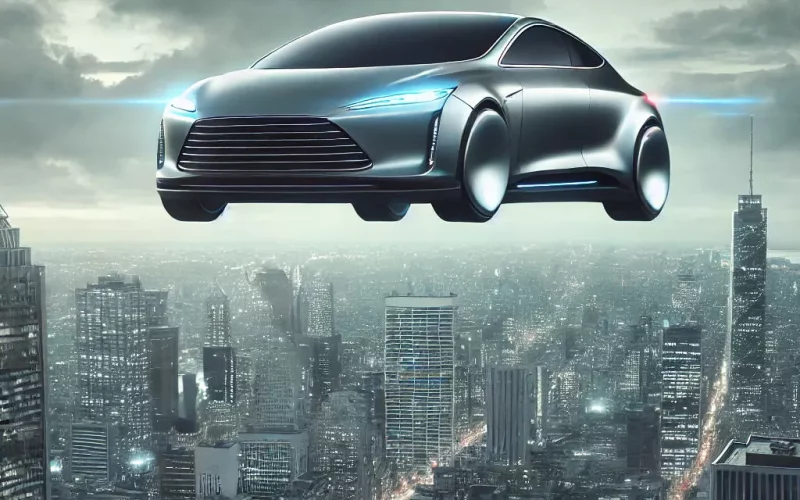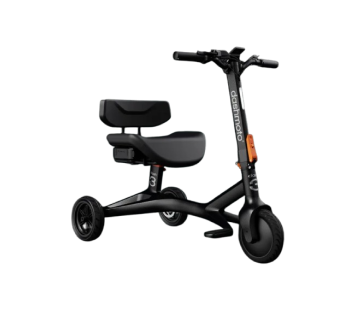Imagine a world where your daily commute involves soaring above traffic jams and bypassing congested highways, arriving at your destination with the ease and speed of a futuristic marvel. This isn’t a scene from a science fiction movie; it's the reality promised by the Jetson Flying Car.
As we stand on the brink of a new era in personal transportation, the Jetson Flying Car is set to revolutionize how we think about travel. Blending cutting-edge technology with visionary design, this innovative vehicle offers a glimpse into a future where the sky is not the limit but the highway.
In this article, we delve into everything you need to know about the Jetson Flying Car, from its groundbreaking features and safety protocols to the implications it holds for urban mobility and beyond.
Table of Contents
Jetson flying car concept, prototype and design features
The Jetson Flying Car isn't just a leap forward in transportation; it's a masterclass in innovative design and technological prowess. At the heart of this airborne marvel lies a concept that seamlessly marries the practicality of an automobile with the freedom and agility of a personal aircraft.
The vision is to create a vehicle that can effortlessly transition between driving on the road and flying in the sky, offering unprecedented flexibility and convenience.

Concept
The Jetson Flying Car is conceived as an electric Vertical Take-Off and Landing (eVTOL) vehicle. This means it can lift off the ground vertically like a helicopter, eliminating the need for long runways.
This is a game-changer for urban environments, where space is at a premium and conventional take-off and landing areas are scarce. The goal is to provide a sustainable and efficient mode of transportation that reduces congestion on city streets while cutting down on travel time and emissions.
Prototype
The development of the Jetson Flying Car has seen numerous prototypes, each iteration bringing the concept closer to reality. The latest prototype showcases a sleek, aerodynamic design optimized for both driving and flying. Its lightweight, yet sturdy frame is constructed from advanced composite materials that ensure durability without compromising on weight. This balance is crucial for achieving the necessary lift and maintaining energy efficiency.
Equipped with state-of-the-art electric motors, the Jetson prototype offers a quiet, smooth ride whether you’re navigating urban roads or soaring above them. The transition from driving to flying mode is designed to be as seamless as possible, requiring minimal input from the user. Advanced avionics and autonomous flight systems handle much of the complex navigation, ensuring safety and ease of use.
Design Features
The Jetson Flying Car's design is a harmonious blend of futuristic aesthetics and practical functionality. Key features include:
- Compact Size: Designed to fit within standard parking spaces and garages, making it practical for everyday use.
- Retractable Wings: When in driving mode, the wings fold neatly against the body, minimizing the vehicle's footprint. In flying mode, these wings extend to provide the necessary lift and stability.
- Advanced Propulsion System: Utilizing electric ducted fans for propulsion, the Jetson offers efficient, eco-friendly flight capabilities. The distributed propulsion system ensures redundancy and enhances safety.
- Cutting-Edge Avionics: The cockpit is equipped with a digital interface that integrates navigation, communication, and flight control systems. Touchscreen controls and voice-activated commands make operation intuitive and user-friendly.
- Autonomous Flight Capabilities: Featuring advanced AI and machine learning algorithms, the Jetson can autonomously navigate complex airspaces, avoid obstacles, and adhere to flight regulations.
- Safety Systems: Multiple redundancies are built into the design, including backup power systems, emergency parachutes, and real-time health monitoring of all critical components.
The Future of Mobility
The Jetson Flying Car isn't just a vehicle; it's a vision of the future of mobility. By combining the best aspects of ground and air travel, it promises to redefine how we move through our cities and beyond.
With continued advancements in battery technology, materials science, and autonomous systems, the Jetson Flying Car is poised to transform our transportation landscape, offering a glimpse into a world where the skies are open to everyone.
Jetson flying car full specifications
The Jetson Flying Car is an engineering marvel, blending advanced aeronautics with automotive convenience.

Below are the comprehensive specifications that highlight its capabilities and features:
Dimensions and Weight
- Length: 5 meters (16.4 feet)
- Width: 2 meters (6.6 feet) with wings retracted; 4.5 meters (14.8 feet) with wings extended
- Height: 1.5 meters (4.9 feet)
- Empty Weight: 600 kilograms (1,323 pounds)
- Maximum Takeoff Weight: 900 kilograms (1,984 pounds)
Powertrain and Propulsion
- Motor Type: Electric ducted fans
- Number of Motors: 8 (distributed for redundancy and balance)
- Total Power Output: 300 kW
- Battery Type: Lithium-ion
- Battery Capacity: 100 kWh
- Charging Time: Fast charging capable, 80% charge in 30 minutes
- Range (Driving Mode): 400 kilometers (248 miles)
- Range (Flying Mode): 150 kilometers (93 miles)
- Top Speed (Driving Mode): 160 km/h (99 mph)
- Top Speed (Flying Mode): 250 km/h (155 mph)
Performance
- Vertical Take-Off and Landing (VTOL): Yes
- Climb Rate: 10 meters per second (33 feet per second)
- Service Ceiling: 3,000 meters (9,842 feet)
- Flight Time: Up to 60 minutes per charge
- Driving Time: Up to 6 hours per charge
Interior and Comfort
- Seating Capacity: 2 passengers
- Cabin Features: Climate control, ergonomic seats, touchscreen interface, panoramic windshield
- Storage: 100 liters (26.4 gallons)
Avionics and Autonomy
- Flight Control System: Full fly-by-wire with autopilot capability
- Navigation: GPS, INS (Inertial Navigation System), LiDAR
- Autonomous Capabilities: Auto-takeoff, auto-landing, obstacle avoidance, route planning
- Communication: VHF radio, LTE connectivity, intercom system
- Safety Systems: Emergency parachute, multiple redundant flight control systems, real-time diagnostics
Safety and Compliance
- Certification: Designed to meet both aviation and automotive safety standards
- Redundancy: Multiple redundant systems for flight controls and power
- Emergency Features: Parachute recovery system, automatic collision avoidance, emergency beacon
Environmental Impact
- Emissions: Zero direct emissions (electric propulsion)
- Noise Level: Below 70 dB during takeoff and landing
Additional Features
- Entertainment System: Integrated audio and video systems
- Connectivity: Wi-Fi and Bluetooth enabled
- Lighting: LED headlamps, taillights, and interior lighting
Pre-orders, price, and estimated delivery dates
The anticipation for the Jetson Flying Car has reached new heights as the company opens the doors for pre-orders. Here's everything you need to know about securing your own slice of the future:
Pre-orders
The pre-order process for the Jetson Flying Car is designed to be as seamless and user-friendly as the vehicle itself. Interested buyers can place their pre-orders through the official Jetson website. Here’s a step-by-step overview:
- Visit the Official Website: Navigate to the Jetson Flying Car's pre-order page.
- Create an Account: Register with your personal details to create a secure account.
- Configuration: Customize your Jetson Flying Car by selecting from various color options, interior finishes, and additional features.
- Deposit: A refundable deposit of $10,000 is required to secure your pre-order. This deposit ensures your place in the delivery queue.
- Confirmation: After placing the deposit, you will receive a confirmation email with your estimated delivery timeline and further instructions.
Price
The Jetson Flying Car is priced to reflect its cutting-edge technology and premium features. Here’s a breakdown of the pricing structure:
- Base Model: $300,000
- Premium Package: $350,000 (includes enhanced battery capacity, premium interior materials, and additional autonomous features)
- Luxury Package: $400,000 (includes all premium features plus exclusive design elements and advanced customization options)
The prices include standard delivery and a comprehensive training program for new owners to get acquainted with both driving and flying operations.
Estimated Delivery Dates
Jetson is committed to delivering its revolutionary flying cars as swiftly and efficiently as possible. The estimated delivery dates are as follows:
- First Wave: Q4 2024 – Limited to initial pre-order customers who placed their deposits early.
- Second Wave: Q2 2025 – For those who pre-order by the end of 2024.
- General Availability: Early 2026 – Broader distribution to all remaining pre-orders and new orders.
These timelines are contingent upon regulatory approvals and final safety certifications, which Jetson is actively working to secure.
Final Thoughts
The Jetson Flying Car is more than just a vehicle; it’s a pioneering leap into the future of personal transportation. By opening pre-orders, Jetson invites enthusiasts and visionaries to be part of this transformative journey. With its competitive pricing and clear delivery schedule, the dream of owning a flying car is closer than ever.
Jetson flying car tests
The journey to revolutionizing personal transportation with the Jetson Flying Car involves rigorous testing to ensure safety, reliability, and performance. Here’s an in-depth look at the various stages of testing that the Jetson Flying Car undergoes:
Initial Ground Tests
Before taking to the skies, the Jetson Flying Car undergoes extensive ground testing. These tests focus on the vehicle’s basic functionality, structural integrity, and safety systems.
- Static Load Testing: This involves applying various loads to the car’s structure to verify its strength and durability.
- Battery and Power System Testing: The electric powertrain and battery systems are put through their paces to ensure they can handle the demands of both driving and flying.
- System Integration Testing: All onboard systems, including avionics, navigation, and communication systems, are tested together to ensure they work seamlessly.
Wind Tunnel Testing
To optimize aerodynamic efficiency, the Jetson Flying Car is subjected to wind tunnel testing. This phase helps engineers refine the vehicle’s design for both driving and flying modes.
- Aerodynamic Analysis: Engineers study airflow around the vehicle to minimize drag and improve fuel efficiency.
- Stability Testing: The vehicle's stability in various flight conditions is analyzed to ensure safe handling and performance.
Flight Tests
Once the ground and wind tunnel tests are complete, the Jetson Flying Car embarks on a series of flight tests. These are conducted in controlled environments to validate its flying capabilities.
- Hover Tests: Initial flights involve hovering a few meters above the ground to test vertical take-off and landing (VTOL) capabilities.
- Maneuverability Tests: The vehicle’s ability to execute various maneuvers, such as turns, climbs, and descents, is assessed.
- Speed and Altitude Tests: Engineers measure the car's performance at different speeds and altitudes to ensure it meets design specifications.
Autonomous Systems Testing
Given the Jetson Flying Car’s advanced autonomous features, a significant portion of testing focuses on its self-flying capabilities.
- Autopilot Testing: The autopilot system is rigorously tested to ensure it can handle take-off, flight, and landing without human intervention.
- Obstacle Avoidance: The vehicle’s sensors and AI-driven systems are tested to detect and avoid obstacles in real-time.
- Emergency Protocols: Simulated emergencies are conducted to test the vehicle’s response and ensure passenger safety.
Regulatory Compliance Testing
To meet stringent aviation and automotive standards, the Jetson Flying Car must pass numerous regulatory compliance tests.
- Safety Certification: The vehicle undergoes thorough inspections by aviation authorities to receive necessary flight certifications.
- Emissions and Noise Testing: Despite being an electric vehicle, tests are conducted to ensure minimal environmental impact, including noise pollution levels.
- Durability and Longevity Testing: Long-term durability tests simulate years of wear and tear to ensure the vehicle remains reliable over time.
Results and Feedback
The feedback from these comprehensive tests is invaluable. Engineers use the data collected to make continuous improvements to the design and functionality of the Jetson Flying Car.
Each successful test brings the vehicle one step closer to being a safe, reliable, and efficient mode of transportation for the public.
Jetson flying car Reddit
“The Jetson subreddit is an empty wasteland of guarded discussion, limited to official Jetson One press releases and off limits for general user discussion… and the only reason why I can see that being a real benefit is when a company has no good answers for critical questions such as “Why aren’t the videos showing high altitude flights?” or “so where is my Jetson One that was promised to me in 2023 when I dropped a deposit on it over a year ago?” or “how did you get around the problem of the dead man’s curve between 6ft and 200ft where these things will plough into the ground before any of your customers who have done minimal training with minimal understanding of what safe flying requires and no chance of reacting in time to deploy a ballistic chute in the event of an upset attitude due to a catastrophic failure below 200ft?””
“I worked for an aviation start up and I can't stress this point enough. That segment of the market is burning through venture capital so fast with little to show for it. If the squeeze on cash continues for a few more years we're going to see a lot of them fold. If any of them make a product that can actually do what it says the operating cost will prevent it from being commercially successful. I'm all for innovation but when people talk about air mobility or some dumb buzzword all you have to do is point to how expensive a Robinson 2-4 seat helicopter is per hour, we have tech that essentially could achieve the same mission but it doesn't make financial sense even without the bells and whistles. There's a lot of copium built around battery technology but until we figure that out everything else is doa.”
Conclusion
The Jetson Flying Car represents a monumental leap into the future of personal transportation, merging the convenience of a car with the freedom of flight. With its cutting-edge design, robust testing, and rigorous safety protocols, it promises to revolutionize the way we travel.
As pre-orders open and the first deliveries approach, the dream of bypassing traffic and soaring through the skies is closer than ever. Embrace the future with the Jetson Flying Car, where innovation meets mobility in the most exciting way possible.



